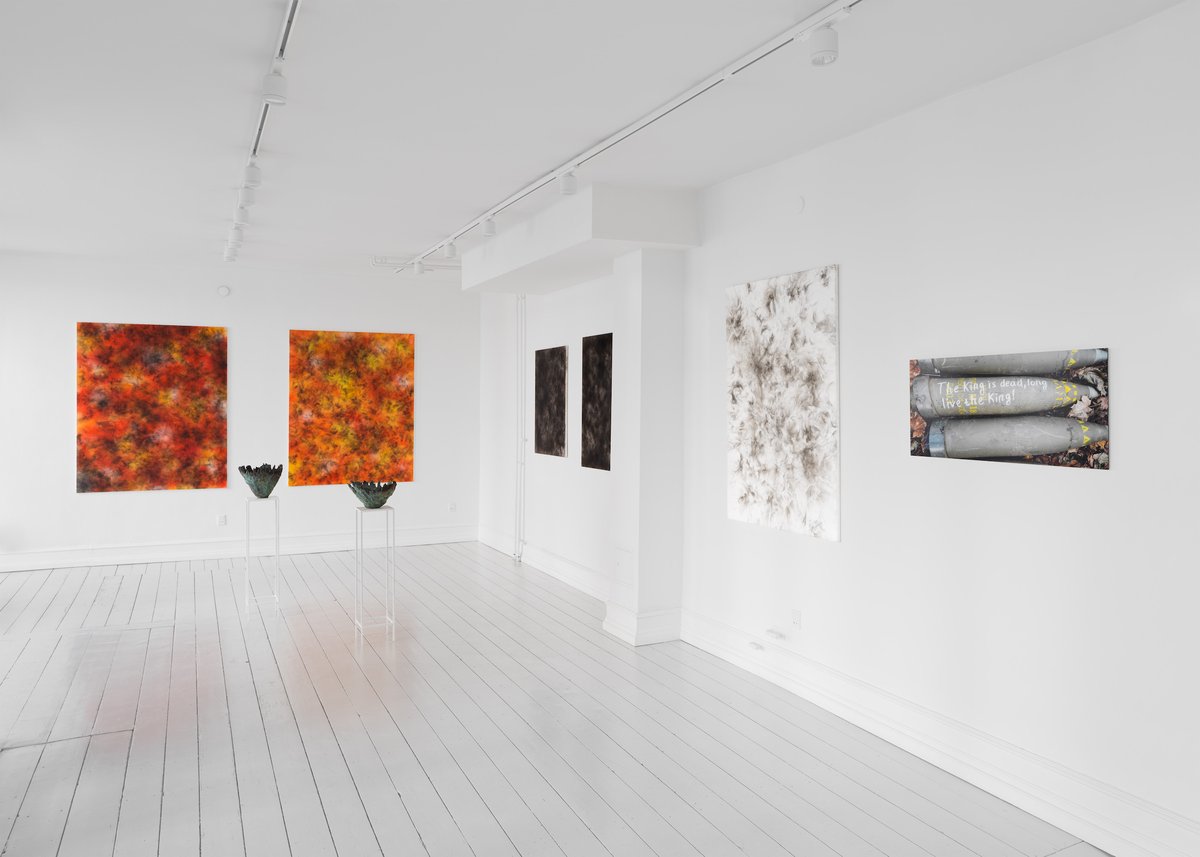A photograph of a no-longer-existing shell sets the scene for the exhibition. The title work The King Is Dead, Long Live the King! was carried out by Ukrainian soldiers on Stockholm’s behalf. They inscribed the phrase onto a 155mm artillery shell, which was then fired at the Avdiivka frontline in Ukraine.
In the series Fire Paintings, the audience is immersed in explosions. The works are created through an energetic process in which canvases are exposed to varying intensities of fire. The soot captured on their surfaces gives rise to both abstraction and figuration. The relentless bombardment of media images of an exploding world has become Stockholm’s catalyst for exploring our primal, instinctive relationship to the explosion.
The exhibition’s second wall-mounted spherical component is the series Seelenloch (Spirit Hole). Spirit holes, found in megalithic graves, are architectural openings that allow the soul to depart from the physical world at the moment of death. This series of reliefs takes such openings as visual focal points. The works carry a cosmic expression that invites the audience on a journey, while at the same time functioning as mirrors.
In contrast to the exhibition’s wall-mounted works, Stockholm’s Bedrocks reside heavily on the gallery floor. Here, sleeping pills are embedded within rocks. The eternal slumber of the rocks is juxtaposed with the artificial, dreamless state induced by sleeping pills. For Stockholm, this medicated, REM-less sleep is the closest we come to true unconsciousness—a kind of near-death state.
On the floor, one also encounters what at first glance appears to be the charred remains of a burned-out bonfire. Yet the charcoal is not what it seems: it has been cast in bronze and black-patinated. Charcoal has played a central role in the development of civilizations, serving both as an energy source and as fuel for metalworking and weapons production.
War as a historical undercurrent materializes in Stockholm’s new bronze works. At a pre- Christian cult site near Tissø, sacrifices were made to the war god Tyr. During the winter solstice, Stockholm dug and poured plaster over soil mounds from the site creating vessels, which were then cast in bronze. The vessels encapsulate the site’s ’aura’ and the ritual practices of earlier times. Through the material of bronze and their ritual, site-specific creation, the works take on the character of contemporary archaeological war artifacts.
The Body Build series explores the intersection of architecture and anatomy. Stockholm has collected building fragments and, through his interaction with them, introduced plaster between body and stone. In this way, negative imprints of an absent body are preserved within the fragments—objects that themselves carry the memory of a whole. Stockholm describes the series as part of his responsive works, in this case a direct and immediate reaction to images of a world in ruins.
In front of the gallery, impromptu memorials will emerge during the exhibition period. Visitors are invited to contribute by placing candles and flowers.
Kilde:
2112 Copenhagen
2112 Copenhagen
